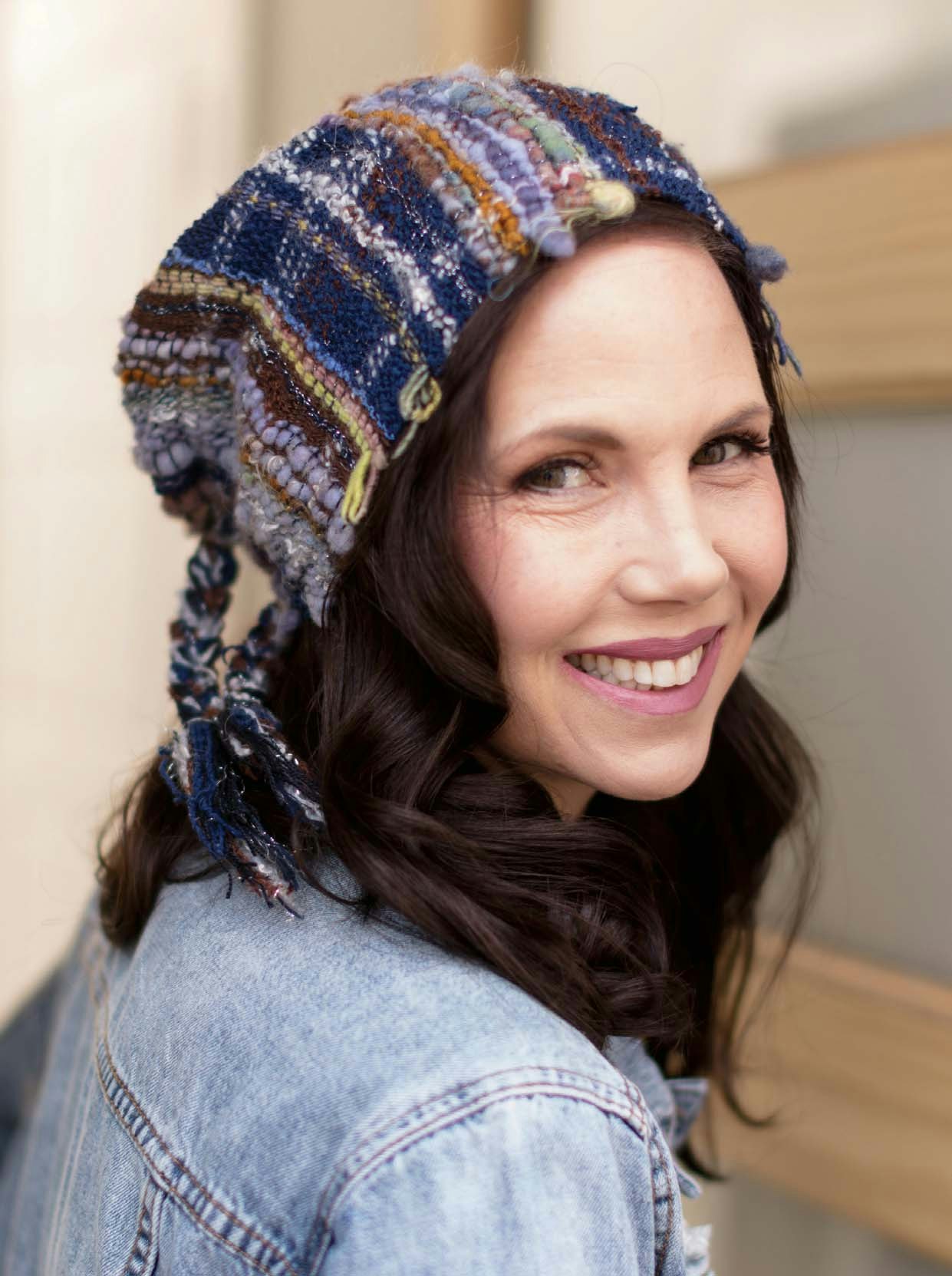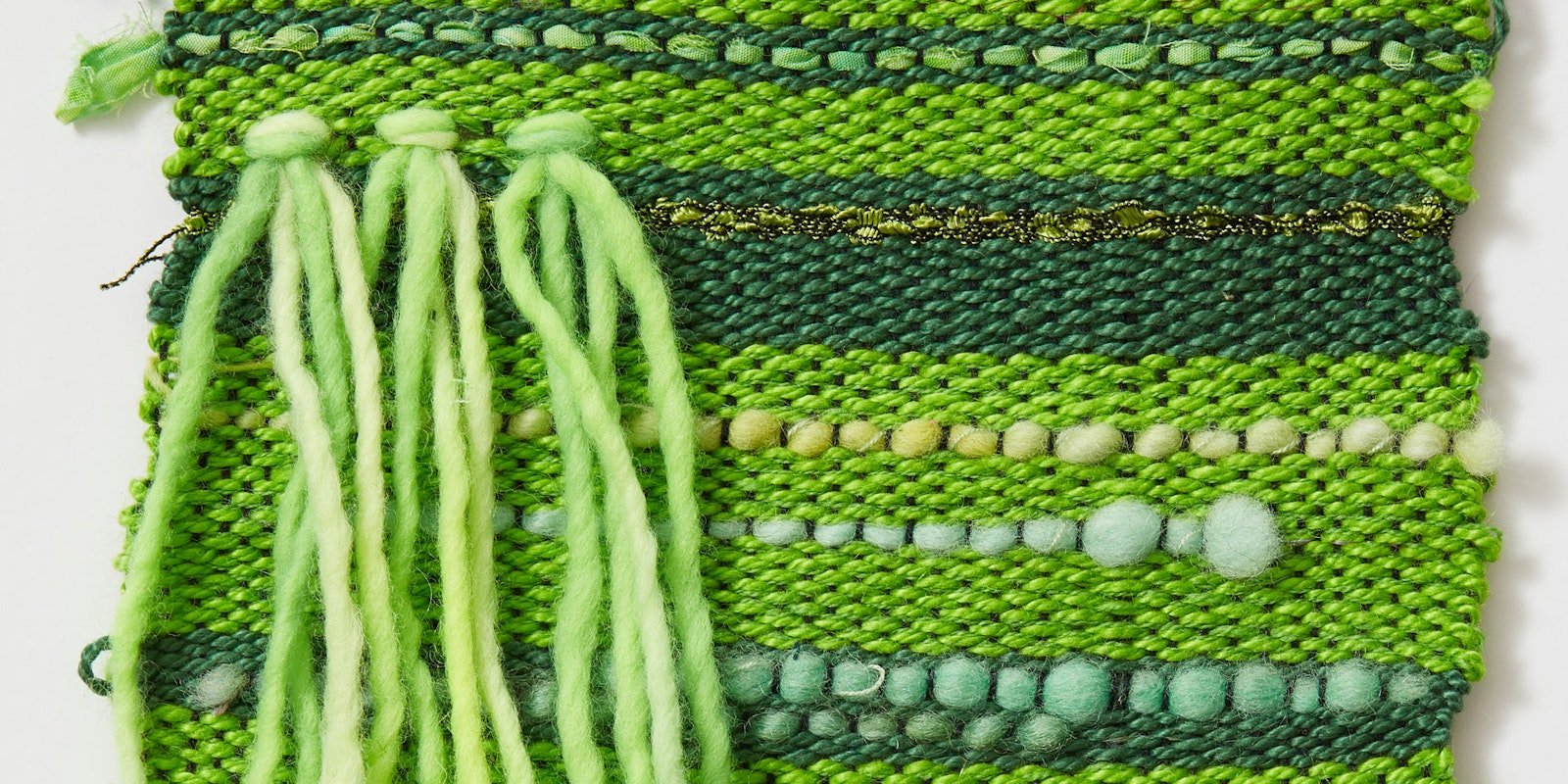I enjoy the comfort of having a routine, especially on the weekends. Saturday morning is spent at the farmers market followed by story time at the book store. I love visiting with all our market friends; it makes me feel at home. Still, some Saturdays I feel a bit wild, and off to the mountains we’ll run for a hike.
Part of what makes routine so wonderful is the utter joy of breaking it. Like when you’re a little kid and your parents let you stay up late to see fireworks on the Fourth of July. I feel the same way about weaving. I love planning projects—sometimes to my detriment. I find joy in doing the math, picking out the yarns, and treadling the same sequence over and over, like singing a song.
Sometimes that wild feeling hits mid-pick, and I start to wonder, “What if?” What if I wove a stripe with some shimmery bamboo? What if I threw in a few picks of that crazy textured yarn? What if I tried a little clasped weft? Sometimes I keep the musings in my head, but other times I find myself gleefully weaving freeform as I follow my fancy.
Spontaneity at the loom is just as wonderful as it is elsewhere in life. It’s like making a homemade pizza and adding dill pickle just because you’re curious how it will taste, and finding out it’s wonderful. (Pickled red onions are also pretty great.) There’s so much joy to be had from freeform weaving and not knowing what the next pick will be or how your piece will look when it’s finished—or even when your piece will be finished.

Esther Rodgers’s No-Sew Hat from Handwoven Sep/Oct 2017 uses freeform weaving techniques to create a unique, fun-to-weave hat. Photo by George Boe
It helps, of course, that I know enough about hand-manipulation techniques, different yarns, and weaving in general to know how to break the rules for the best effect. I know how to use my yarns to get the cloth I want, and which techniques to employ when. I know I probably shouldn’t add long floats to my hand towels and instead opt for some slubby cotton to give them texture, and that unless I want differential shrinkage I need to be careful what I mix into anything woven from wool.
If you’ve had that wild feeling on the loom but were either too scared to listen or simply didn’t know how to get the results you wanted, you’ll want to check out Esther Rodgers’s course on free-form weaving. In her course, Expressive Weaving on a Rigid-Heddle Loom, Esther teaches you ways to add texture, color, and shimmer to your weaving. She’ll cover traditional weaving techniques including ones usually reserved for tapestry, art yarns, fibers, and extras such as sequins. With all that information you can then boldly go forth and play at the loom.
Whatever you weave, I hope you have fun!
Happy Weaving,
Christina
Originally published 6/30/2022; updated 12/24/2024

